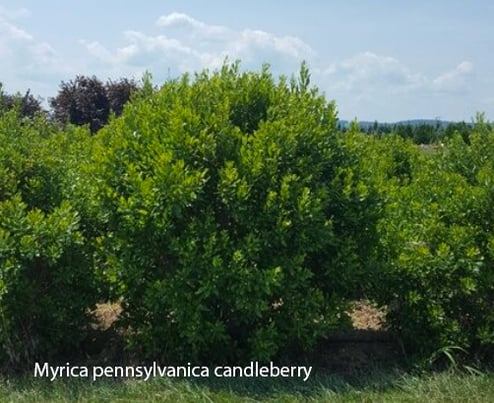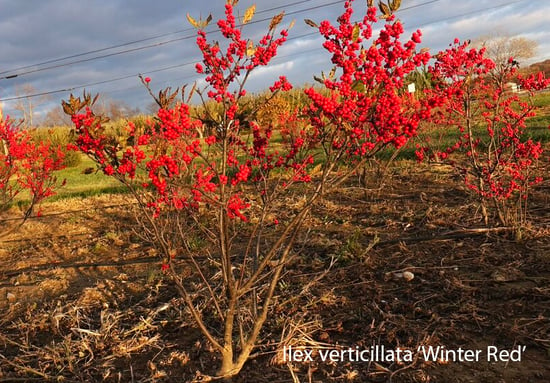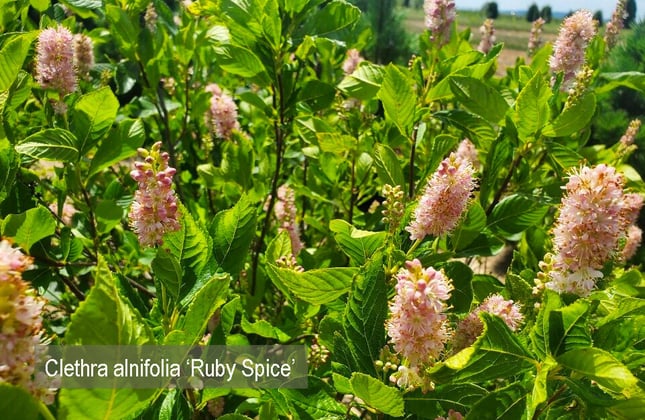Salt is great for curing ham, but it does not cure much when it comes to your landscape -- quite the opposite. Most plants can't handle it. Fortunately for landscapers, there are some salt tolerant plants. And they belong to a small but tenacious minority in the plant world.
Salt absorbed into a plant can basically poison it. If it doesn’t outright kill the plant, it harms flower buds and keeps them from opening. For example, salt spray or salt infused air vapor can completely dehydrate the bud scales that enwrap and protect the tender tissues of developing leaves and flowers. In turn, those unprotected leaves and flower buds dry out and fail.
Salt water taken up by the roots can displace minerals the plants need. Salt mixed in the soil can interfere with moisture getting to the roots of plants. Too much salt will actually pull moisture away from the roots and back into the soil! And even if the plant technically gets enough moisture, cells in the plant absorb the salt and collapse.
Sounds like a lot of bad news, but if you understand the environment where you are planting and find the right salt tolerant plants for said environment, you can create beautiful, sustainable landscapes for your clients. Here’s how.
Where Salt Tolerance Is Imperative
 If you are living near a shoreline, the obvious answer is “all the time!” But there are some obvious and not-so-obvious scenarios when you need to think about salt tolerant plants. If you serve clients along the East Coast, in Newport News, Montauk, or points in between -- anywhere near shore, bay, or estuary -- that will be a challenge for a lot of plants. And it’s not just about salt in the soil. Salt water in the air is a big source of struggle for many plants as well.
If you are living near a shoreline, the obvious answer is “all the time!” But there are some obvious and not-so-obvious scenarios when you need to think about salt tolerant plants. If you serve clients along the East Coast, in Newport News, Montauk, or points in between -- anywhere near shore, bay, or estuary -- that will be a challenge for a lot of plants. And it’s not just about salt in the soil. Salt water in the air is a big source of struggle for many plants as well.
Ok, you get it. Living near the ocean means needing to think about salt tolerant plants. What about some less obvious sources of salinity you should be thinking about? If you have plantings along streets and sidewalks, snowplows and traffic are probably spraying salty slush onto those plantings. Creating barriers, planting back away from the sidewalk, and the use of salt tolerant plants are all good solutions in that situation.
There are other causes to be aware of. Over application of synthetic fertilizers has been a big problem for years around the Eastern Shore of Maryland. Poultry manure, which is extremely high in phosphorus, was used to fertilize crops and has since leached into the Bay. Now some of that salt is coming back into the soil, challenging everyone from large-scale growers to homeowners managing individual yards.
Naturally Salt Tolerant Plants
Taking cues from our oft overlooked friend, Nature, is always a good starting point. Sedges and grasses that are growing naturally near a coastline are going to be a good addition to landscaping in areas that require salt tolerant plants.
 One anecdote stands out to me - a customer from Long Island told me they had Boxwood that were totally submerged after Hurricane Sandy. But those plants bounced back and survived. So, anecdotally, Boxwood is a fighter in salty and otherwise harsh conditions. Native Bayberry is another prolific plant growing along the Eastern Shore environs. They have evolved over time to be comfortable with higher levels of salinity.
One anecdote stands out to me - a customer from Long Island told me they had Boxwood that were totally submerged after Hurricane Sandy. But those plants bounced back and survived. So, anecdotally, Boxwood is a fighter in salty and otherwise harsh conditions. Native Bayberry is another prolific plant growing along the Eastern Shore environs. They have evolved over time to be comfortable with higher levels of salinity.
Other native salt tolerant options include Groundsel Tree, whose golden flowers are good for pollinators. Marsh-elder has a good clue in the name that it will be a good choice for landscapes near shores.
Coexisting with Salty Air and Soil
The harmful effects of salt on plants show up in a variety of ways such as fewer flowers and leaves, stunted growth, and “burning” of leaves and flowers. Most plants cannot handle a barrage of salinity, but some have adapted to be perfectly fine coexisting with salt in air and soil.
Depending on the conditions and location of your or your client’s property and the type of salt exposure--soil salts, air vapor/ocean mist, or roadside splash spray-- there are numerous options for you to explore to remedy the situation and create vibrant, salt-hearty landscapes.
Reserving the plants you need for when you need them can be a real challenge. Download our ebook Solving Plant Shortages in a High Demand Landscaping Market to learn about practical solutions to common plant sourcing problems.





